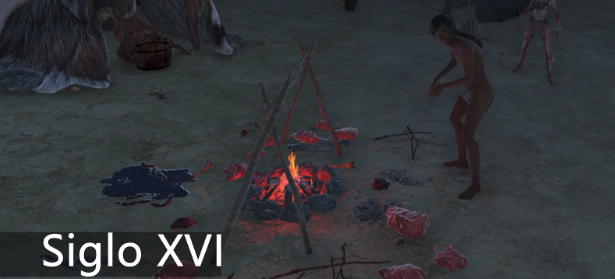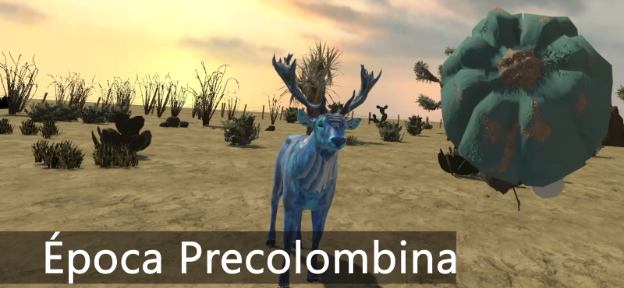Remembered Desert (2024)
Desierto Recordado is an immersive VR experience that reconstructs four historical periods of the Chihuahuan Desert in northeastern Mexico, the largest desert in North America. With complete freedom of movement, visitors explore detailed environments shaped by environmental storytelling. Developed in collaboration with historian Andrés Gordillo López, each period — the Mesozoic Era, the 16th, 19th, and 21st centuries — reveals how the region’s landscape and cultures have transformed over time. Interactions invite users to make decisions in morally complex scenarios: from the trial of a woman accused of witchcraft during the Inquisition to a child's coerced act of violence during the war on drugs. These choices affect the environment and personalize the historical experience. The journey begins around a desert campfire, where the traditional cardenche song — a regional a cappella genre on the verge of extinction — evokes the emotional and cultural depth of the land. The work weaves together documentary structure, symbolic elements, and critical imagination into a poetic exploration of territory, memory, and identity.
Narratives and myths about national identity have focused on Mesoamerican civilizations, known for their cultural development and abundant natural wealth. This centralist view has overshadowed the stories of other regions like Aridoamérica. The generalized depiction of the desert as an inhospitable area with extreme climatic conditions has labeled the Northeast as a region of transit, uninhabitable, barbaric, and lacking culture, as suggested by the phrase attributed to José Vasconcelos: “Civilization ends where carne asada begins.”
The image of the "non-place" where migrants die, drug trafficking is concentrated, and resources are scarce contrasts with a region that is home to 9% of Mexico's population, 25% of the known cacti in the world, a high diversity of endemic flora and fauna, the aquifers of Cuatrociénegas with stromatolites and unique microbial biodiversity that offers valuable information about the evolution of life on Earth, fossils, important archaeological sites, and, in addition, the third state with the highest economic contribution to the country, with a GDP of 8%.
Despite the historical, cultural, and natural wealth of the Chihuahuan Desert, narratives of scarcity have led to economic and public policies that, along with the passivity of its inhabitants, have allowed the deterioration, exploitation of its resources, and the handing over of its territory to mining, soft drink, brewery, real estate, cement, and many other companies.
What implications do incomplete or partial narratives have on the identity formation of the inhabitants of a region? How would our identity be if our collective memory, mediated by perception, told different stories? Can we reconstruct and reclaim these narratives?



